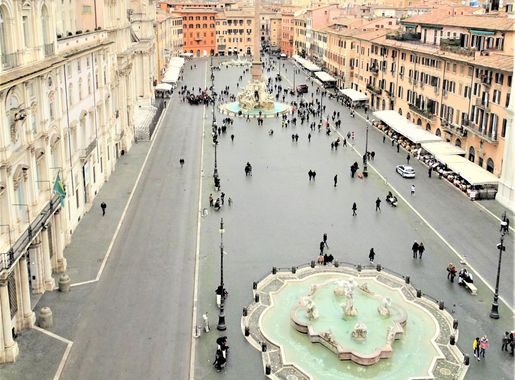
Piazza Navona: The Heartbeat of Baroque Rome
Experience the baroque splendor and vibrant life of Piazza Navona, Rome's most iconic square, where history and modernity blend in perfect harmony.
Piazza Navona is one of Rome's most iconic squares, steeped in art, history, and culture. Originally built on the site of the Stadium of Domitian in the 1st century AD, this grand open space was later transformed into a quintessential Baroque masterpiece. Today, it is a bustling hub where past and present seamlessly coexist, making it a must-see destination for any visitor to the Eternal City. The square is dominated by three magnificent fountains, the most famous being the Fountain of the Four Rivers by Gian Lorenzo Bernini, which features an Egyptian obelisk at its center. Each of the four river gods represents a different continent—an artistic representation of the world's rivers that mesmerizes tourists and locals alike. Surrounding the fountains, you’ll find the Church of Sant'Agnese in Agone, a beautiful Baroque church designed by Francesco Borromini, Bernini's rival. Piazza Navona is not just about its historical monuments; it is also a lively area filled with street artists, musicians, and an array of cafes and restaurants. Whether you're sipping an espresso at an outdoor café, indulging in some gelato, or simply people-watching, the atmosphere here is electric. The square is particularly enchanting at night when the fountains are illuminated, adding a magical touch to the already charming setting.
Local tips in Piazza Navona
- Visit early in the morning or late in the evening to avoid the crowds and enjoy a more serene experience.
- Don’t miss the chance to explore the Church of Sant'Agnese in Agone, which often gets overshadowed by the fountains.
- Try the local gelato from one of the nearby gelaterias; it's some of the best in Rome.
- Keep an eye out for street performers and artists, who add a lively vibe to the square.
- If you want a memorable dining experience, consider having dinner at one of the restaurants with outdoor seating overlooking the square.
Piazza Navona: The Heartbeat of Baroque Rome
Piazza Navona is one of Rome's most iconic squares, steeped in art, history, and culture. Originally built on the site of the Stadium of Domitian in the 1st century AD, this grand open space was later transformed into a quintessential Baroque masterpiece. Today, it is a bustling hub where past and present seamlessly coexist, making it a must-see destination for any visitor to the Eternal City. The square is dominated by three magnificent fountains, the most famous being the Fountain of the Four Rivers by Gian Lorenzo Bernini, which features an Egyptian obelisk at its center. Each of the four river gods represents a different continent—an artistic representation of the world's rivers that mesmerizes tourists and locals alike. Surrounding the fountains, you’ll find the Church of Sant'Agnese in Agone, a beautiful Baroque church designed by Francesco Borromini, Bernini's rival. Piazza Navona is not just about its historical monuments; it is also a lively area filled with street artists, musicians, and an array of cafes and restaurants. Whether you're sipping an espresso at an outdoor café, indulging in some gelato, or simply people-watching, the atmosphere here is electric. The square is particularly enchanting at night when the fountains are illuminated, adding a magical touch to the already charming setting.
Iconic landmarks you can’t miss
Campo de' Fiori
Experience the lively spirit of Campo de' Fiori, Rome's historic plaza known for its vibrant market, rich history, and delightful ambiance.
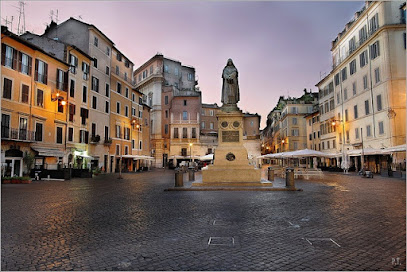
Fiumi Fountain
Discover the Fiumi Fountain, a stunning Baroque masterpiece in Rome's vibrant Piazza Navona, celebrating the beauty of art and architecture.
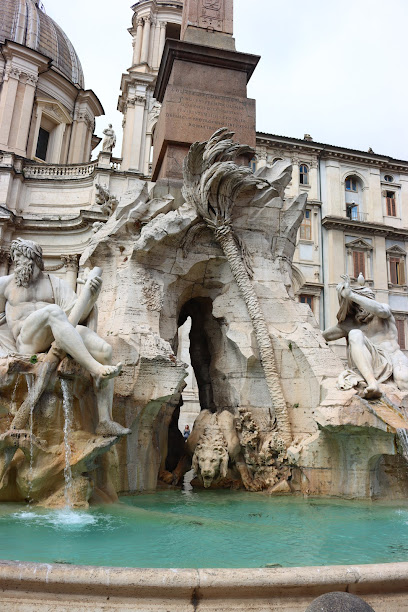
Neptune Fountain
Discover the majestic Neptune Fountain in Piazza Navona, a Baroque marvel that showcases artistry and history in the heart of Rome.
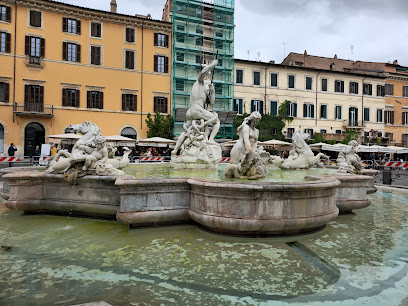
Stadium of Domitian
Explore the historic Stadium of Domitian in Rome, an archaeological marvel showcasing the grandeur of ancient Roman culture and architecture.
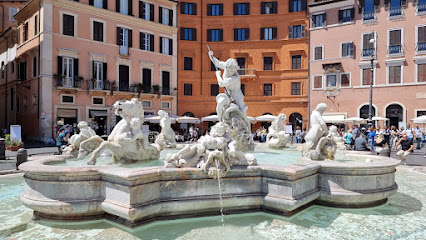
Fountain of the Moro | Roma
Discover the enchanting Fountain of the Moro in Piazza Navona, a stunning masterpiece of Baroque art in the heart of Rome, perfect for unforgettable memories.

Fountain of the Moro
Discover the breathtaking Fountain of the Moro in Rome's Piazza Navona, a stunning showcase of Baroque art and vibrant local culture.
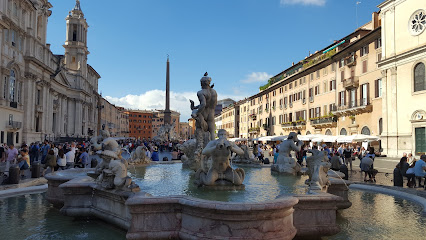
Touristation Navona
Visit Touristation Navona in Rome for exceptional sightseeing tours, unique gifts, and expert tourist information in a beautiful historic square.

Obelisco Agonale
Discover the majestic Obelisco Agonale at Piazza Navona, Rome's largest obelisk and a stunning example of ancient artistry and Baroque architecture.
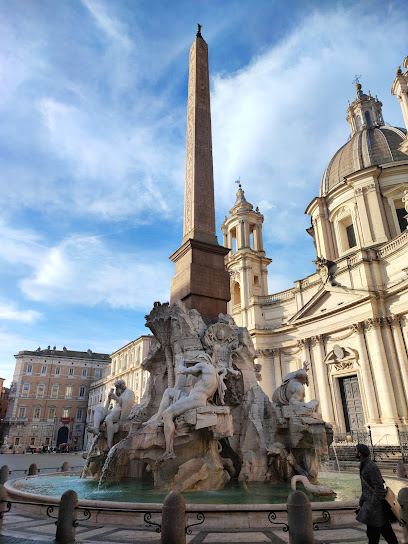
Palazzo Pamphili
Discover the rich history and stunning architecture of Palazzo Pamphili, a Baroque masterpiece in the heart of Rome's vibrant Piazza Navona.
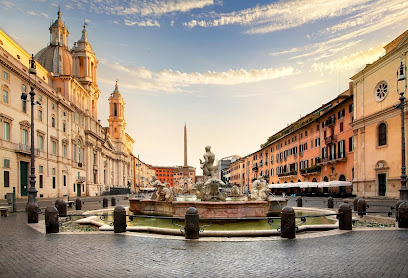
Piazza Navona
Discover the allure of Piazza Navona, a historic square in Rome filled with stunning fountains, vibrant cafes, and a lively atmosphere that embodies the spirit of the Eternal City.
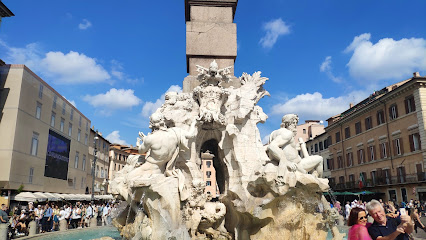
piazza navona
Explore the splendor of Piazza Navona, Rome's iconic baroque square, adorned with stunning fountains, art, and vibrant street life.
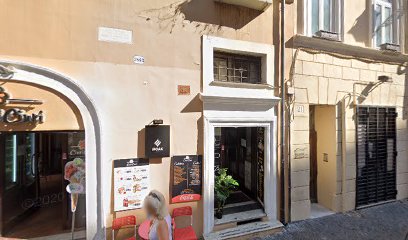
Unmissable attractions to see
Campo de' Fiori
Explore the vibrant Campo de' Fiori in Rome, a historic plaza brimming with fresh markets, delightful eateries, and an unforgettable atmosphere.
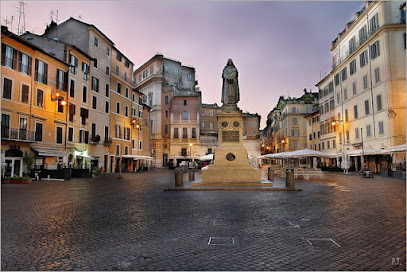
Fiumi Fountain
Discover the Fiumi Fountain, a stunning Baroque masterpiece in Rome's Piazza Navona, showcasing exquisite sculptures and vibrant local culture.

Fontana delle Tartarughe
Discover the enchanting Fontana delle Tartarughe in Rome, a stunning fountain that combines art, history, and serene beauty in a picturesque setting.
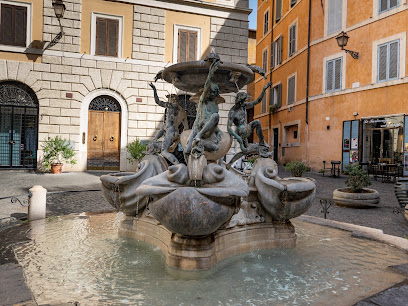
Museo di Roma - Palazzo Braschi
Discover the rich history of Rome at Museo di Roma - Palazzo Braschi, featuring exquisite art collections and breathtaking views near Piazza Navona.
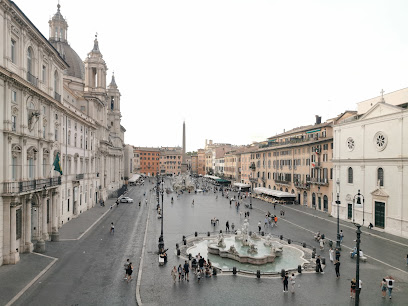
Sant'Agnese in Agone
Discover the Baroque beauty of Sant'Agnese in Agone, a historic church in Rome's Piazza Navona, rich in art and spirituality.

Stadium of Domitian
Explore the ruins of the Stadium of Domitian, a hidden archaeological gem in Rome, where ancient sports and history come alive.

Palazzo Madama
Discover the architectural beauty and political significance of Palazzo Madama, a historic landmark in the heart of Rome.
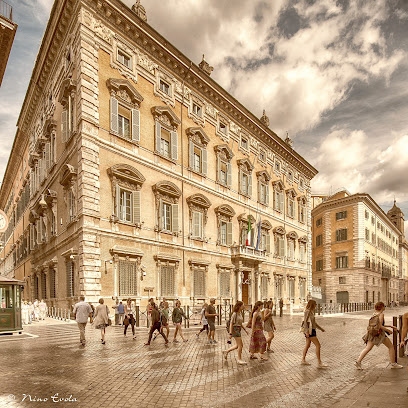
Obelisco Agonale
Explore the stunning Obelisco Agonale in Rome, a historic landmark surrounded by vibrant culture and breathtaking architecture.
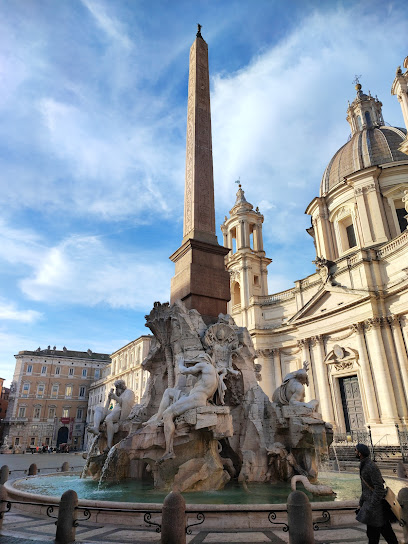
Palazzo Pamphili
Discover the elegance of Palazzo Pamphili, a historical gem in Rome's vibrant Piazza Navona, rich in art and cultural history.

Palazzo Torres
Discover the architectural splendor of Palazzo Torres, a historic gem near Piazza Navona that encapsulates the essence of Rome's rich heritage.

Essential places to dine
Saltimbocca ristorante
Experience authentic Roman cuisine at Saltimbocca Ristorante near Piazza Navona - where tradition meets flavor in every bite.
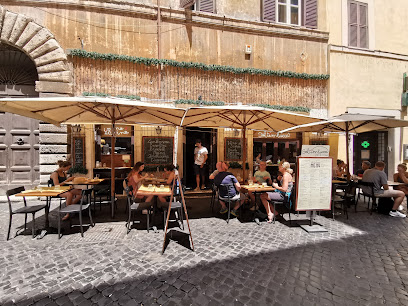
433
Experience authentic Roman cuisine at Ristorante 433 - where tradition meets taste in the heart of Rome.
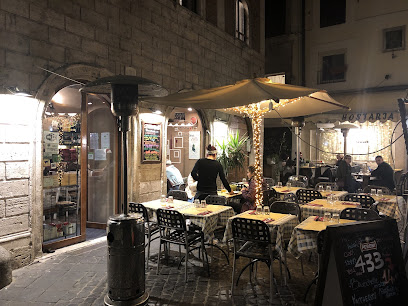
Ponte e Parione - Ristorante Piazza Navona
Experience authentic Roman cuisine at Ponte e Parione near Piazza Navona—where traditional flavors meet warm hospitality.
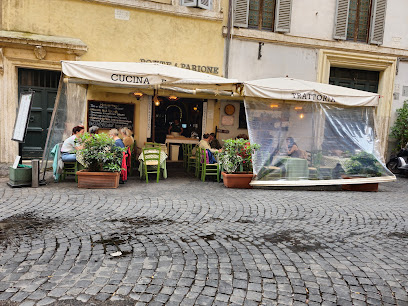
La Piccola Cuccagna - Ristorante
Experience authentic Italian cuisine at La Piccola Cuccagna in Rome - where every dish tells a story.
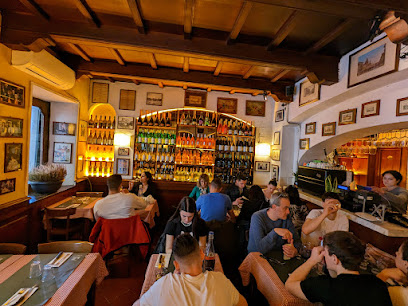
Ristorante Virginiae - Cucina Tipica Romana
Discover authentic Roman cuisine at Ristorante Virginiae - where tradition meets flavor in the heart of Rome.
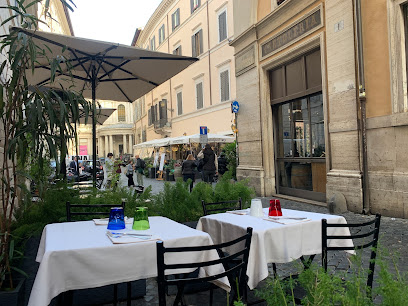
Bernini
Discover authentic Italian flavors at Bernini in Piazza Navona – where culinary excellence meets Roman charm.
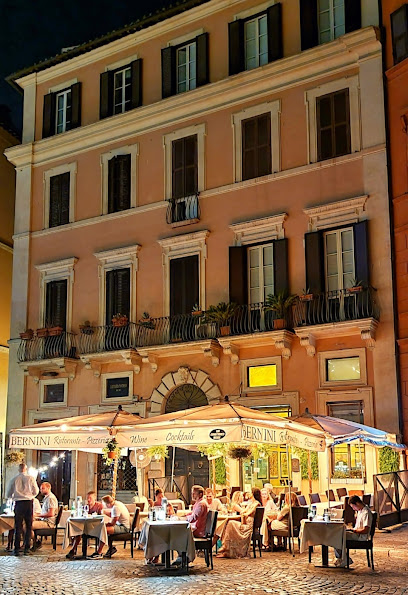
Il Tagliere Toscano navona
Discover authentic Tuscan flavors at Il Tagliere Toscano Navona - a must-visit restaurant in Rome's historic Piazza Navona.
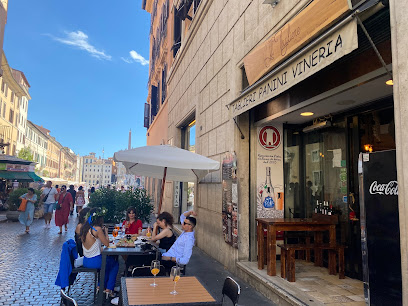
Ai Tre Tartufi
Discover authentic Italian flavors with a twist at Ai Tre Tartufi in Piazza Navona—where truffles meet tradition.

Camillo dal 1890
Experience authentic Italian cuisine at Camillo dal 1890 in Piazza Navona – where tradition meets flavor amidst Rome's historic charm.

Ristorante Tre Scalini
Experience authentic Italian cuisine at Ristorante Tre Scalini in Rome's stunning Piazza Navona, where tradition meets flavor.
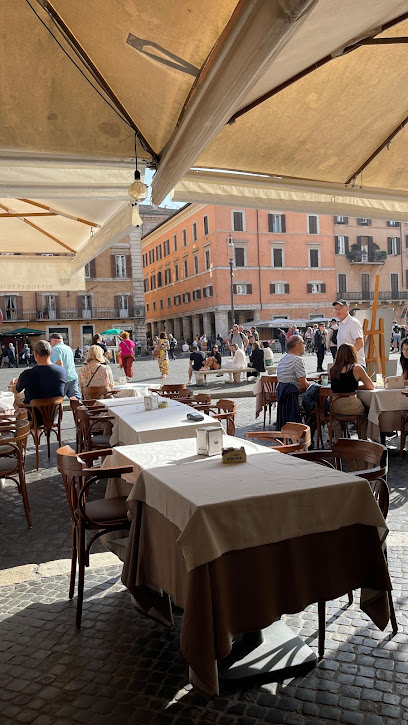
Ristorante Santa Lucia
Discover authentic Italian cuisine at Ristorante Santa Lucia near Piazza Navona - where flavors meet history in beautiful Rome.
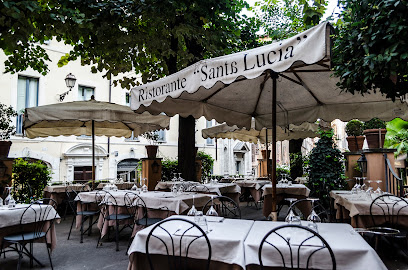
4 Fiumi - Piazza Navona
Experience authentic Italian cuisine at 4 Fiumi in Piazza Navona—where culinary tradition meets vibrant Roman culture.
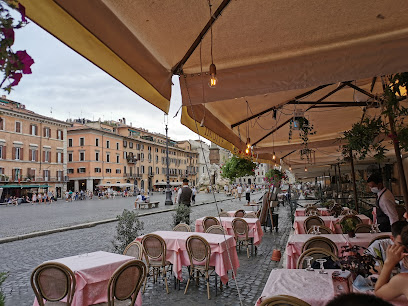
La Pace del Palato
Discover La Pace del Palato: where traditional Italian flavors meet modern culinary artistry in a cozy Roman setting.
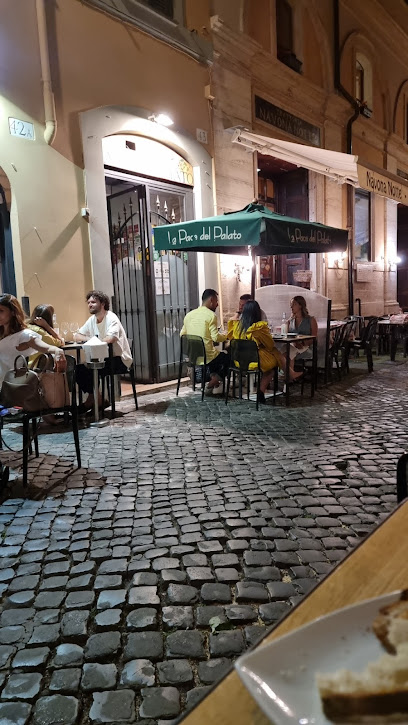
Markets, malls and hidden boutiques
La Boutique del Limoncello Roma
Discover the authentic taste of Italy at La Boutique del Limoncello in Rome, featuring homemade limoncello and other traditional Italian delights.
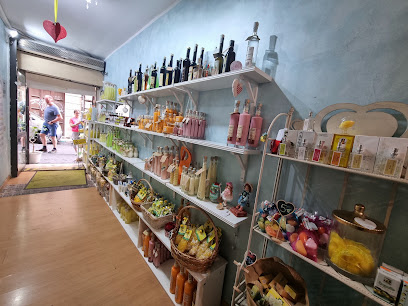
Al Sogno - GIOCATTOLI, BAMBOLE e PELUCHE
Explore Al Sogno in Piazza Navona, a delightful gift shop and toy store offering a magical selection of toys, dolls, and plush animals in the heart of Rome.
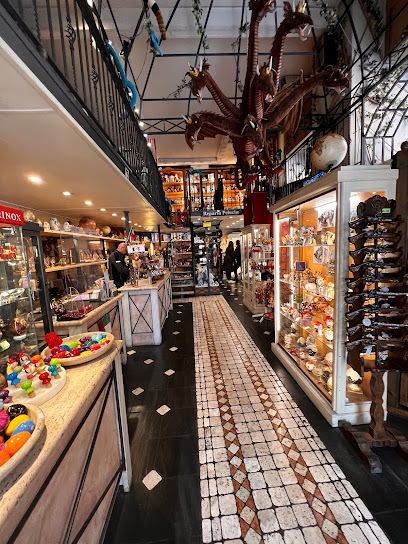
L'Artigianato
Explore L'Artigianato in Rome for unique handcrafted souvenirs that represent the heart of Italian culture and artistry.
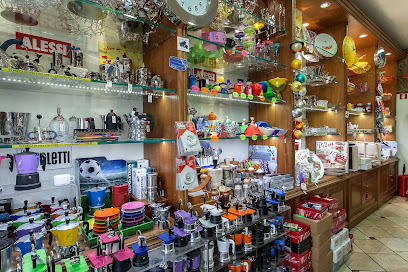
Rome Duck Store
Explore the enchanting Rome Duck Store, a toy paradise in the heart of Rome offering a whimsical selection of toys and gifts for all ages.
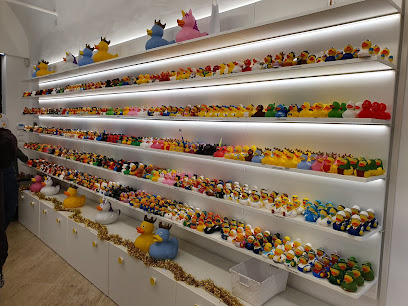
Manufactus Made In Italy
Explore the finest handcrafted gifts at Manufactus Made In Italy, nestled in the iconic Piazza Navona, Rome's artistic heart.

Cartoleria Pantheon dal 1910
Explore Cartoleria Pantheon, Rome's historic stationery store, offering exquisite paper goods and unique gifts in a charming setting.
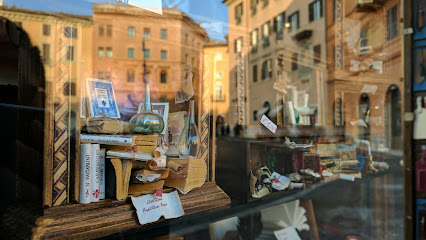
KLK Navona
Explore the heart of Rome at KLK Navona, where exceptional costume jewelry meets Italian craftsmanship and style.
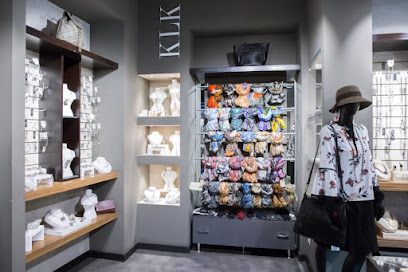
Artisanal Cornucopia
Discover the charm of Italian fashion at Artisanal Cornucopia, a boutique clothing store offering unique styles and exquisite accessories in the heart of Rome.
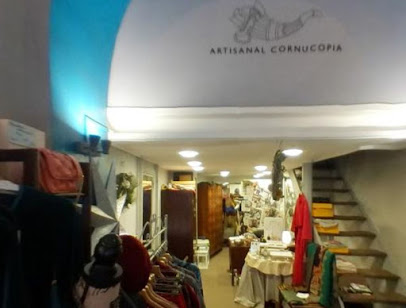
Historia
Explore Historia in Rome, where history comes alive through remarkable collectibles in the heart of Piazza Navona.

supermarket piazza navona
Discover the flavors of Rome at Supermarket Piazza Navona, your local grocery store for fresh produce and Italian specialties in the heart of the city.
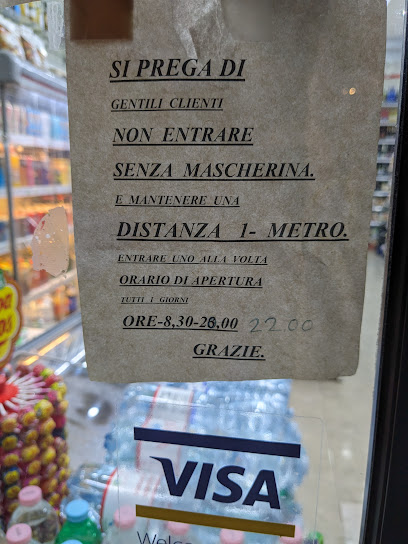
Essential bars & hidden hideouts
Ristorante Bar del Fico
Discover the vibrant flavors and lively atmosphere at Ristorante Bar del Fico, a must-visit culinary gem in the heart of Rome.
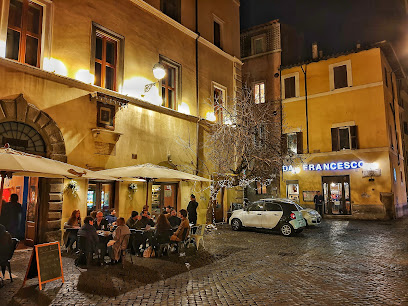
Cul De Sac
Discover the authentic flavors of Italy at Cul De Sac, Rome's premier gastropub and wine bar, where every sip tells a story.

Bernini
Discover the culinary delights of Bernini in Rome, where authentic Italian cuisine meets a charming atmosphere in the heart of Piazza Navona.
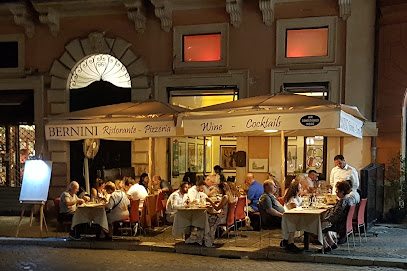
Il Tagliere Toscano navona
Experience the rich flavors of Tuscany in the heart of Rome at Il Tagliere Toscano Navona, an authentic Italian restaurant near Piazza Navona.

Pub Cuccagna
Discover the heart of Roman cuisine at Pub Cuccagna, where traditional flavors meet a lively atmosphere in the heart of Rome.

L'Emporio alla Pace
Experience the charm of L'Emporio alla Pace, where every sip transports you deeper into the heart of Rome's vibrant café culture.
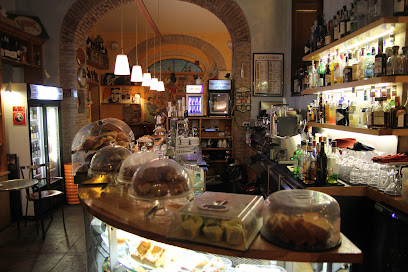
Caffè Domiziano
Discover the flavors of Italy at Caffè Domiziano, where exquisite cuisine meets the enchanting ambiance of Piazza Navona.
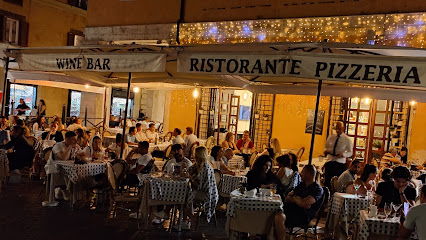
Mons
Discover Mons, a vibrant pub in Rome offering delicious burgers, an extensive beer selection, and trendy cocktails in a lively atmosphere.
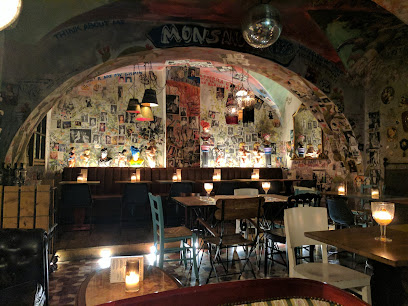
Caffè Barocco
Experience the charm of Rome at Caffè Barocco, a delightful bar and café in the iconic Piazza Navona, serving coffee, cocktails, and light bites.
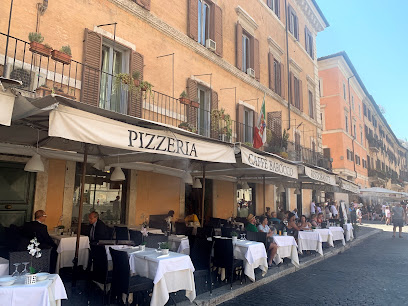
Bar Navona
Experience the vibrant atmosphere of Bar Navona in Rome's historic Piazza Navona, where local culture meets delightful refreshments.
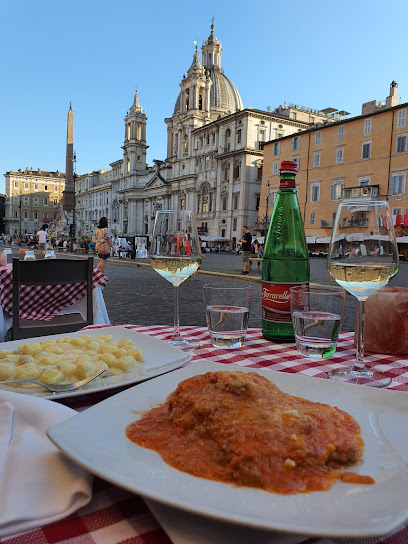
Local Phrases
-
- HelloCiao
[chow] - GoodbyeArrivederci
[ah-ree-veh-dehr-chee] - YesSì
[see] - NoNo
[noh] - Please/You're welcomePer favore/Prego
[pehr fah-vo-reh/preh-goh] - Thank youGrazie
[graht-zee-eh] - Excuse me/SorryMi scusi/Scusa
[mee skoo-zee/skoo-sah] - How are you?Come stai?
[koh-meh stai] - Fine. And you?Bene. E tu?
[beh-neh/eh too] - Do you speak English?Parli inglese?
[pahr-lee een-gleh-zeh] - I don't understandNon capisco
[nohn kah-pee-skoh]
- HelloCiao
-
- I'd like to see the menu, pleaseVorrei vedere il menù, per favore
[vohr-ray veh-deh-reh eel meh-noo, pehr fah-vo-reh] - I don't eat meatNon mangio carne
[nohn mahn-joh kahr-neh] - Cheers!Salute!
[sah-loo-teh] - I would like to pay, pleaseVorrei pagare, per favore
[vohr-ray pah-gah-reh, pehr fah-vo-reh]
- I'd like to see the menu, pleaseVorrei vedere il menù, per favore
-
- Help!Aiuto!
[ah-yoo-toh] - Go away!Vai via!
[vah-ee vee-ah] - Call the Police!Chiama la polizia!
[kee-ah-mah lah poh-lee-tsyah] - Call a doctor!Chiama un dottore!
[kee-ah-mah oon doh-toh-reh] - I'm lostMi sono perso
[mee soh-no pehr-soh] - I'm illSto male
[stoh mah-leh]
- Help!Aiuto!
-
- I'd like to buy...Vorrei comprare...
[vohr-ray kohm-prah-reh] - I'm just lookingSto solo guardando
[stoh soh-loh gwahr-dahn-doh] - How much is it?Quanto costa?
[kwahn-toh koh-stah] - That's too expensiveÈ troppo caro
[eh trohp-poh kah-roh] - Can you lower the price?Puoi abbassare il prezzo?
[pwah-ee ahb-bahs-sah-reh eel preh-tsoh]
- I'd like to buy...Vorrei comprare...
-
- What time is it?Che ora è?
[keh oh-rah eh] - It's one o'clockÈ l'una
[eh loo-nah] - Half past (10)Dieci e mezza
[dee-eh-chee eh meh-tzah] - MorningMattina
[mah-ttee-nah] - AfternoonPomeriggio
[poh-meh-ree-joh] - EveningSera
[seh-rah] - YesterdayIeri
[ee-eh-ree] - TodayOggi
[oh-jee] - TomorrowDomani
[doh-mah-nee] - 1Uno
[oo-noh] - 2Due
[dweh] - 3Tre
[treh] - 4Quattro
[kwah-ttroh] - 5Cinque
[cheen-kweh] - 6Sei
[seh-ee] - 7Sette
[seh-tteh] - 8Otto
[oht-toh] - 9Nove
[noh-veh] - 10Dieci
[dee-eh-chee]
- What time is it?Che ora è?
-
- Where's a/the...?Dov'è un/il...
[doh-veh oon/eel] - What's the address?Qual è l'indirizzo?
[kwahl eh leen-dee-reet-soh] - Can you show me (on the map)?Puoi mostrarmi (sulla mappa)?
[pwah-ee moh-stahr-mee/sool-lah mahp-pah] - When's the next (bus)?Quando è il prossimo (autobus)?
[kwahn-doh eh eel prohs-see-moh/ow-toh-boos] - A ticket (to ....)Un biglietto (per ....)
[oon beel-lyet-toh/pehr]
- Where's a/the...?Dov'è un/il...
History of Piazza Navona
-
Piazza Navona was built on the site of the Stadium of Domitian, constructed in 86 AD. This ancient Roman structure was primarily used for athletic contests and could accommodate around 30,000 spectators. Over the centuries, the stadium fell into disrepair, but its outline shaped the current layout of the piazza.
-
In the 17th century, Piazza Navona underwent a significant transformation under the influence of Pope Innocent X, who commissioned the construction of several Baroque landmarks. The square became a showcase of artistic achievement, featuring the iconic Fountain of the Four Rivers by Gian Lorenzo Bernini, completed in 1651, representing the four major rivers of the four continents known at the time.
-
During the Renaissance, Piazza Navona evolved into a vibrant cultural hub, attracting artists, poets, and intellectuals. The surrounding area became dotted with cafés and art galleries, and the square hosted various festivals and public events. This period solidified its reputation as a central meeting place in Rome.
-
The Pamphili family, particularly through Pope Innocent X, played a crucial role in the development of Piazza Navona. The family palace, Palazzo Pamphili, which overlooks the square, was completed in the 17th century and contributed to the area’s architectural grandeur, reflecting the power and influence of the family in Rome.
-
Today, Piazza Navona remains a lively public space, known for its street artists, musicians, and open-air cafés. The square is a focal point for both locals and tourists, celebrated for its Baroque fountains and vibrant atmosphere. Events such as the Christmas market and various cultural festivals continue to attract visitors, making it a living testament to Rome's historical and cultural legacy.
Piazza Navona Essentials
-
Piazza Navona is centrally located in Rome, easily accessible from various neighborhoods. From Termini Station, take bus 64 or 40, which will take you to the nearby Largo di Torre Argentina. A short 10-minute walk will lead you directly to Piazza Navona. From the Vatican, it's a pleasant 15-minute stroll. Alternatively, taxis are available throughout the city, and rideshare services like Uber operate in Rome.
-
Piazza Navona is a pedestrian-friendly area, making it ideal for walking. The nearest metro station is Barberini (Line A), approximately a 15-minute walk away. Public buses also serve the area; lines 30, 81, and 87 stop nearby. Bicycles can be rented via local bike-sharing services, and walking is the best way to enjoy the surrounding streets and hidden gems.
-
Piazza Navona is generally safe for tourists, but standard precautions should be taken. Be cautious of pickpockets, especially in crowded areas. Avoid poorly lit streets at night. While no specific high-crime areas exist targeting tourists, areas near major tourist attractions can see increased petty crime. Always stay aware of your belongings and surroundings.
-
In case of an emergency, dial 112 for police, fire, or medical assistance. The nearest hospital is Ospedale Santo Spirito, located a short distance from Piazza Navona. Keep a list of emergency contacts handy, including your country's embassy. Pharmacies are also available in the area for minor health issues.
-
Fashion: Do wear comfortable shoes, as the cobblestones can be uneven; don't wear overly casual attire when dining in upscale restaurants. Religion: Do dress modestly when visiting nearby churches; don't enter sacred sites with bare shoulders or shorts. Public Transport: Do validate your ticket before boarding; don't engage in loud conversations. Greetings: Do greet shopkeepers with 'Buongiorno'; don't overlook basic courtesies. Eating & Drinking: Do try local gelato and enjoy outdoor dining; don't eat while walking, as it's considered impolite.
-
To experience Piazza Navona like a local, visit in the early morning to enjoy the quiet atmosphere before the crowds arrive. Explore the surrounding streets for authentic trattorias offering traditional Roman dishes. Take time to appreciate the street performers and artists who showcase their talents in the square. For an insider’s perspective, join a local walking tour focusing on the history and architecture of the area.
Nearby Cities to Piazza Navona
-
Things To Do in St. Peter's Square
-
Things To Do in Apostolic Palace
-
Things To Do in Sistine Chapel
-
Things To Do in Vatican Necropolis
-
Things To Do in St. Peter's Basilica
-
Things To Do in Gregorian Etruscan Museum
-
Things To Do in Vatican Museums
-
Things To Do in Vatican Pinacoteca
-
Things To Do in Vatican Gardens
-
Things To Do in Orvieto
-
Things To Do in Assisi
-
Things To Do in Perugia
-
Things To Do in Montepulciano
-
Things To Do in Arezzo
-
Things To Do in Siena






